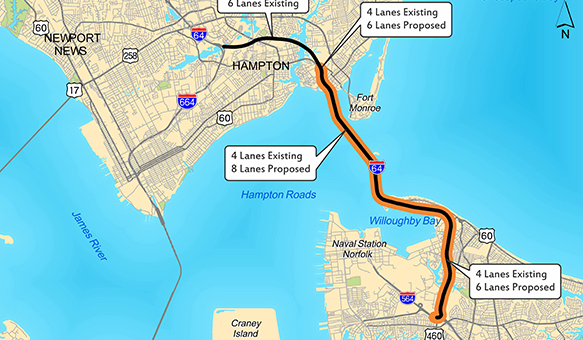
The Governor of the State of Virginia in the United States has announced that the joint venture comprising VINCI Construction Grands Projets and Dodin Campenon Bernard, both VINCI Construction subsidiaries (33%), Dragados USA (42%) and Flatiron (25%), is preferred bidder for the contract for extending and upgrading the I-64 between Hampton and Norfolk, worth €2.9 billion ($3.3 billion).
The new component involves digging two tunnels, each 2.4 km long, between two artificial islands using a variable density tunnel boring machine with a diameter of 13.56 metres. The two islands will be connected to the continent by two viaducts over the sea, the first measuring 1 km and the other 1.9 km.
For the existing component, demolition, reconstruction and widening works will be carried out over 14.5 km of road and two additional traffic lanes will be created in each direction. The road will continue to be used throughout the works.
The project’s aim is to decongest the existing network: the existing road, which dates back to 1976, is used daily by over 100,000 vehicles, causing tailbacks of up to 8 km to the bridge upstream.
VINCI is a recognised player in the modernisation and extension of the US road network. In December 2016, for instance, VINCI Construction Grands Projets delivered the Ohio River Bridge between Indiana and Kentucky, which included a 762 metre cable stayed bridge, a 512 metre twin-bore tunnel and 19 engineering structures. The Ohio River Bridge project was the VINCI Group’s first public-private partnership in the United States.
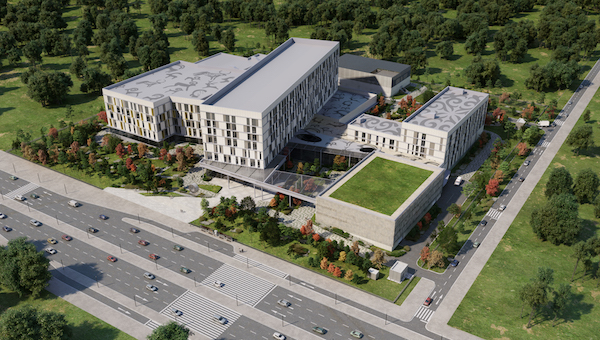
For the third year in a row, VINCI Construction Grands Projets has been awarded the prize in the “building projects outside France” category for its preliminary design of the Oncology Centre in Astana, Kazakhstan. The jury was won over by the collaborative process involving participants based in different continents and the implementation of a full BIM initiative for the first time in this Central Asian country. The teams also created mock-ups of more than 500 pieces of medical equipment from instruction manuals and technical fact sheets.
The winner in the “new projects over 40,000 m2” category was the Tour des Jardins de l’Arche in Paris La Défense area. This project was developed by ADIM Paris Ile-de-France (a VINCI Construction France subsidiary), responsible for project management, using 3D printing to produce a model equipped with 500 sensors for wind tunnel testing. The project structured and implemented ambitious BIM technology from the very first stages of design ranging from model creation and works package coordination to using an effective collaborative platform and process involving all the actors in the project.
Citinéa (a VINCI Construction France subsidiary) won the prize in the “renovation projects over 40,000 m2” category with its Noirettes & Grand Bois residential rehabilitation project in Vaulx-en-Velin in the Rhône region. BIM, used from the programming to operational phase, allows the numerous participants in the project to benefit from an integrated process. The joint use of 3D scanning technology to create mock-ups of existing buildings and prefabricate walls with a structural framework in wood using BIM should allow the company to implement the systemisation of the rehabilitation of 980 housing units over a nine-month construction period.
Having received five silver BIM awards since 2014*, VINCI Construction France, through its subsidiaries and engineering teams, has indisputably established its BIM expertise and know-how.
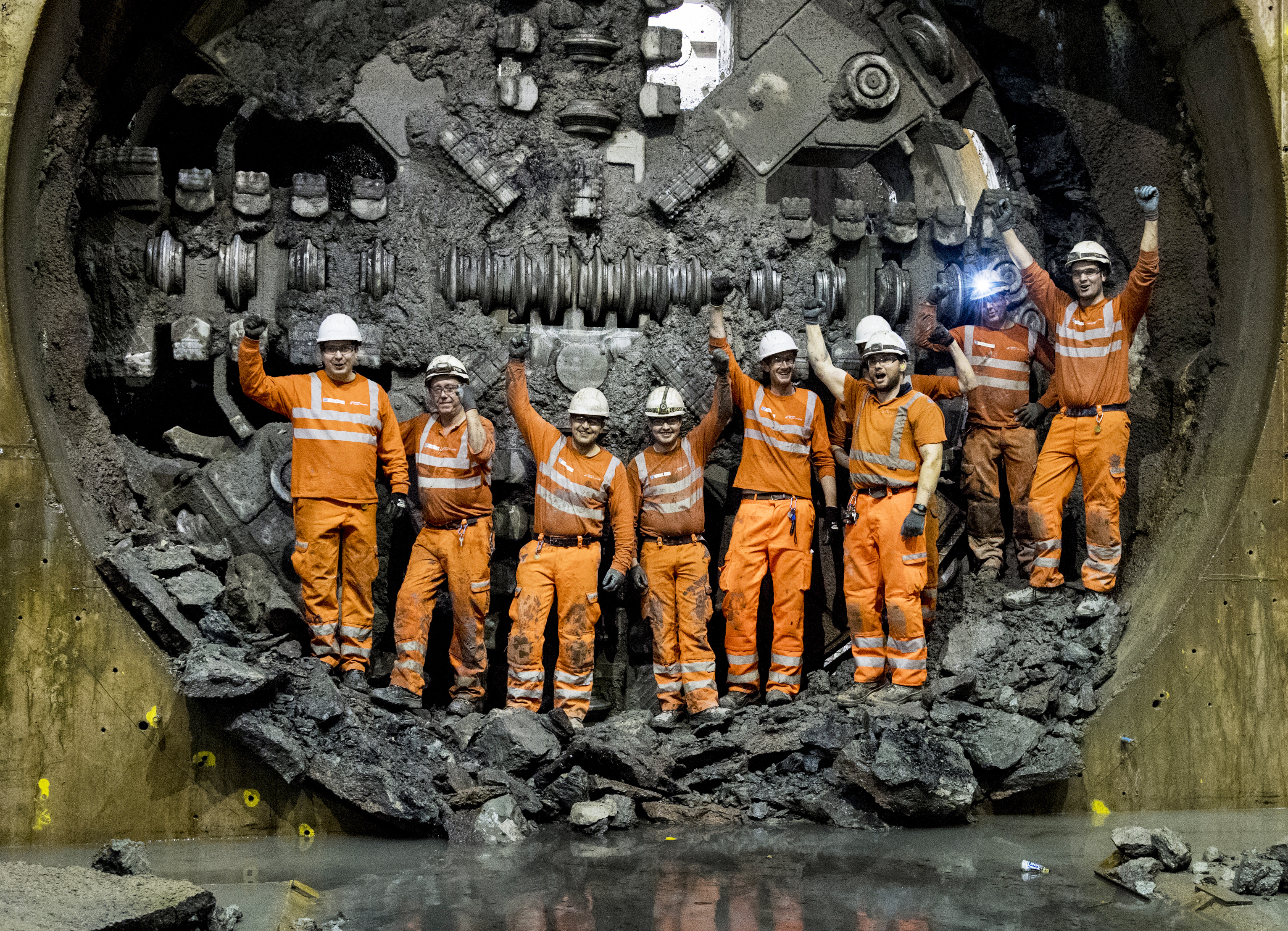
VINCI Construction Grands Projets, in joint venture with its British partner Costain, has just delivered Scotland’s longest wastewater tunnel. At 4.7 metres in diameter and 5 kilometres in length, this major structure, valued at £100 million (€115 million), is part of a programme by Scottish Water, the national water-management authority, designed to enhance water quality, preserve the environment, and prevent flooding in and around Glasgow. On July 30, 2018, Roseanna Cunningham, Scotland’s Cabinet Secretary for Environment, Climate Change and Land Reform, officially launched the Shieldhall Tunnel.
A major environmentally friendly project for Scotland
This now-completed project delivers major environmental benefits to Greater Glasgow, including a cleaner River Clyde. By providing additional storage capacity of 90,000 cubic metres, which is equivalent to 36 Olympic-sized swimming pools, the new tunnel will relieve the current sanitation network and reduce flooding risk in the region. At the official launch of the Shieldhall Tunnel, Environment Secretary Roseanna Cunningham emphasised the structure’s strategic importance: “Communities across Glasgow will benefit for years to come from this latest extraordinary feat of engineering, which lies hidden deep beneath the city.” Completion of the Shieldhall Tunnel is a key achievement in the broader programme designed to modernise Glasgow’s current wastewater-management network.
Leveraging leading-edge expertise to ensure successful project delivery
A work team nearly 100-strong was mobilised for a period of two years to achieve this major project. A slurry shield tunnel-boring machine (TBM), named Daisy the Driller by a local schoolboy, was used on the project. This 1,000-tonne, 180-metre-long TBM was launched into a cut-and-cover trench 200 metres long, 6 metres wide large, and 10 metres deep. Construction of the trench required excavating more than 25,000 tonnes of material in a very constricted working area in close proximity to local residents. The TBM was used in a very busy urban setting beneath active railways and former coal quarries that required treatment prior to the TBM’s passage.
In all:
- More than 500,000 tonnes of soil, stone, and clay were excavated, and 90% of this material was recycled
- More than 3,200 concrete rings were installed
- 5 million work hours were required to complete the project
VINCI Construction Grands Projets, a leading player in tunnel construction and in the United Kingdom
In the United Kingdom, VINCI Construction Grands Projets, a subsidiary of VINCI Construction, provides development support to large cities on their sanitation and sewerage schemes thanks to its expertise in large-scale tunnel design and construction. In January 2016, the Company delivered the 7.7-kilometre Lee Tunnel in London. Currently, it is carrying out the Tideway project in conjunction with partners, including a main 5.5-kilometre tunnel in connection with the Lee Tunnel project.The Shieldhall Tunnel is yet one more achievement in the long list of underground works delivered by VINCI Construction Grands Projets, including the Hallandsås railway tunnels in Sweden, the El Teniente mine-access tunnels in Chile, and metro-construction projects in Hong Kong, Doha in Qatar, and Cairo in Egypt. The Company is also active in France on various lots on the Grand Paris Express project (building Line 15 southbound and extending Line 14 southbound). These achievements add to the expertise that VINCI Construction Grands Projets can deploy on current underground works in the United Kingdom. In addition to handling one of the three lots on the Tideway scheme, the Company is currently managing two mandates as part of the Crossrail network construction project, including building structures at Whitechapel Station and tunnels beneath Liverpool Street Station and Whitechapel Station.
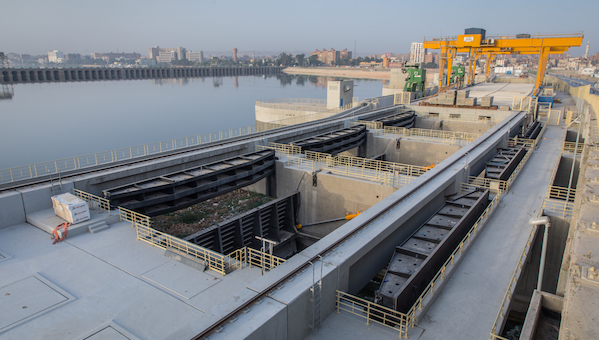
On August 12, 2018, VINCI Construction Grands Projets delivered the new Assiut Dam, located midway between Cairo and Luxor, in an official ceremony with the President of Egypt, Abdel Fattah al-Sissi, in attendance. The new dam is located 400 metres downstream from the former dam, an early-20th-century structure that no longer met capacity requirements. The new dam can irrigate nearly 700,000 hectares of additional agricultural land, which is a strategic added value in a country with sustained population growth. The dam will also generate 32 MW of electrical power thanks to four 8-MW turbines and enhance two-way river navigation on the Nile through a system of large locks.
Work on this project, which began in May 2012, consisted initially in drawing down the Nile Valley aquifer to 35 metres below the level of the Nile River on highly permeable alluvial terrain. To that end, we developed a pumping system consisting of 89 deep wells to collect water 40 metres below the riverbed. As a result, to enable dry construction, up to 300,000 m3 of water were evacuated a day. All told, this dam-building project required 370,000 m3 of concrete (the equivalent of a latest-generation nuclear power plant) and 65,000 tonnes of reinforcement.
This technological performance was made possible thanks to VINCI Construction Grands Projets’ extensive experience in designing and building major dams, including the Naga Hammadi Dam, also located on the Nile in Egypt and delivered in 2008. To achieve the project, 2,200 local workers were hired and trained to meet our standards with regard to safety, quality, and worksite organisation. Currently, VINCI Construction is building another major dam – in Kenya. In late 2017, the consortium consisting of VINCI Construction Terrassement, Sogea-Satom (subsidiaries of VINCI Construction) and Egis Eau began work on the Ruiru II Dam construction contract whose objective is to increase drinking-water supply in Nairobi.
VINCI Construction, a leading and longstanding player in Egypt
The new Assiut Dam adds to VINCI Construction’s numerous achievements in Egypt, which span more than a century since GTM took part in dredging operations for the Suez Canal as early as 1899. VINCI Construction also contributed to salvage operations for the Nubian temples of Abu Simbel and Amada carried out from 1964 to 1969. Currently, VINCI Construction Grands Projets is taking part in building new metro lines in Cairo (Phases 3 and 4a of Line 3), having delivered the El Azhar road tunnels in 2001 and the Ain Sukhna rolling mill in 2008.
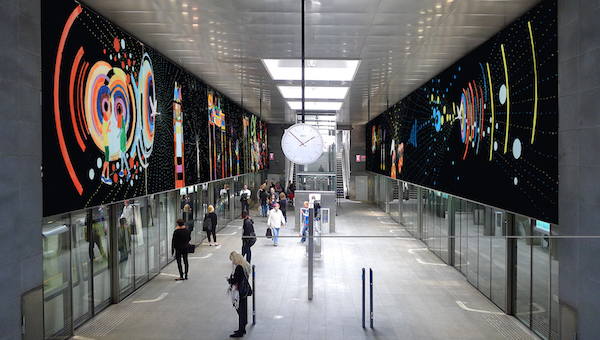
VINCI and HOCHTIEF, in a joint venture, have been awarded the design and build contract for Sydhavn Metro Line (Line 4) in Copenhagen. The client Metroselskabet has awarded the contract to an equal-parts joint venture consisting of VINCI Construction Grands Projets and HOCHTIEF Infrastructure. HOCHTIEF will be the technical leader of the joint venture. The EUR 460 million contract was signed on February 28, 2018 in Copenhagen.
“Eighteen years after the delivery of the Øresund tunnel and two years after the award of the Femern tunnel, it’s our honor to continue to work for the Danish people’s daily mobility with a new line of underground metro, especially with our historical partner HOCHTIEF”, says Eric Chambraud, Operations Director Northern Europe, British Isles and Americas at VINCI Construction Grands Projets.
“We are very pleased to have this opportunity of demonstrating our tunneling expertise in Copenhagen again. This contract continues our successful activities in the Danish infrastructure market. We are looking forward to working once again together with VINCI”, says Riku Tauriainen, Executive Vice President of HOCHTIEF Infrastructure GmbH Europe West.
This design and build project for the southern metro line is a six-year mandate that calls for the construction of dual 4.4-kilometer tunnels using two earth-pressure tunnel boring machines (TBM) along with five underground stations and two crossover structures. The project also includes electrical and mechanical systems, architectural interior works, and in-tunnel ventilation.
The tunnels will have an interior diameter of 4.9 meters and an exterior diameter of 5.5 meters. This metro-network extension south of the Danish capital (Sydhavn or M4) will be connected to the main ring line (Cityringen).
VINCI and HOCHTIEF have brought together their skill sets in design, project management, and underground works to build this new metro line. For the first time in Denmark, 3D modeling will be used extensively as early as the bid-submission phase by the consortium. VINCI and HOCHTIEF have a longstanding tradition of collaboration, including on metro projects (such as the one in Athens, for example). More recently, the two groups have joined forces on projects in Greece and in other countries outside Europe.
Since May 2016, the VINCI Group has led the joint venture entrusted with the task of building the world’s longest underwater tunnel: the Femernbelt, which is 18 kilometers long and will link Denmark and Germany. In 1996, VINCI delivered the Storebælt railway tunnels connecting Copenhagen to the mainland. In 2000, VINCI delivered the Øresund tunnel connecting Denmark and Sweden. VINCI Construction Grands Projets is a world-leading design-build specialist in urban mobility with current metro projects for Hong Kong, Cairo in Egypt, Doha and Lusail in Qatar, and, more recently, Lot GC02 for Line 14 South and Lot T3C for Line 15 of Grand Paris Express.
In Copenhagen HOCHTIEF, in a joint venture, is currently executing the Metro Cityringen Branch-off to Nordhavn tunnel project. In the capital of Denmark, the company also built an approximately four-kilometer-long district heating tunnel. HOCHTIEF has already been successfully operating on the Scandinavian infrastructure market for many years. For instance, the company was responsible for building the Eastern Bridge over the Great Belt. Another milestone is the construction of the Øresund Bridge between Copenhagen and Malmö, in which HOCHTIEF also had a significant participation.
(Photo credit: Christian Schmidt-Ramussen)
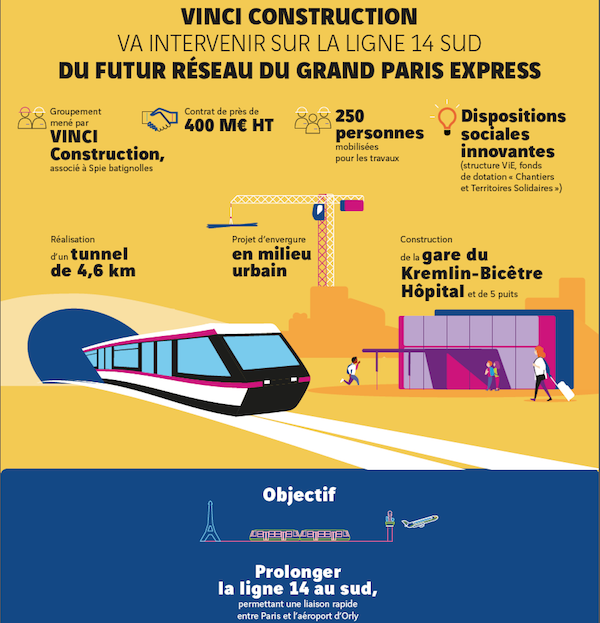
- 4.6 km of tunnel to be excavated using a tunnel boring machine
- Construction of the new Kremlin Bicêtre Hôpital station
- Contract value: almost €400 million (excluding tax)
The consortium led by VINCI Construction (Dodin Campenon Bernard, lead company; VINCI Construction France; VINCI Construction Grands Projets and Botte Fondations), together with Spie batignolles (Spie batignolles Génie Civil and Spie batignolles Fondations), has been awarded a major contract as part of the Grand Paris Express programme. The RATP has selected this consortium to execute works package GC02 of the future Line 14 South between Olympiades (in the 13th arrondissement of Paris) and Orly Airport.
The contract, worth almost €400 million (excluding tax), requires the use of an earth pressure balance tunnel boring machine to excavate a 4.6 km tunnel between Maison Blanche Paris XIII futur station and the TBM starting shaft at Jean Prouvé. It also includes construction of the new Kremlin Bicêtre Hôpital station and five ventilation and emergency shafts. The contract is scheduled to last 72 months.
A large-scale project in an urban environment
The GC02 works package site cuts through Paris, Kremlin Bicêtre, Gentilly, Villejuif and L’Haÿ-les-Roses. It also passes near Kremlin Bicêtre Hospital and the A6 motorway. Integrating the worksite into this environment is a major challenge that has led to numerous consultation meetings being held between the RATP, the Société du Grand Paris (SGP) and all the cities, local authorities and residents involved.
Innovative and ambitious social integration programme
This package’s works will create almost 250 jobs. Significant measures are planned for the integration of around 50 long-term unemployed people, with some 83,000 hours of training and support to be provided over the course of the project. In 2011, VINCI set up ViE (VINCI insertion Emploi), an entity specialising in social and professional integration, to help Group companies with this aspect of their contracts. In addition, the “Chantiers et Territoires Solidaires” endowment fund created by VINCI will support public interest projects implemented in the vicinity of the worksites. Spie batignolles is also strongly committed to facilitating the social and professional integration of marginalised people, notably through its Fondation Spie batignolles.
Line 14 South, the link with Orly Airport
A missing link between central Paris and Orly Airport, the Line 14 South will be used by more than 260,000 residents of Paris and the Val de Marne and Essonne départements. It will provide connections with metro Line 7, Line C of the Paris RER regional express system, Line 7 of the tram system and Lines 15 South and 18 of the Grand Paris Express rapid transit system. It will create a fast link between Paris and Orly Airport, which is essential for 2024 when the city will host the Olympic Games.
VINCI Construction and Spie batignolles, two players already working on major metro projects
VINCI Construction and Spie batignolles are participating in the extension of Lines 4, 12, and 14 of the Paris metro, which is managed by the RATP. In addition, VINCI Construction and Spie batignolles, in a consortium, have won works packages T3C (€926 million) and T2D (€156 million) for Line 15 South of the Grand Paris Express programme, which is managed by the SGP.
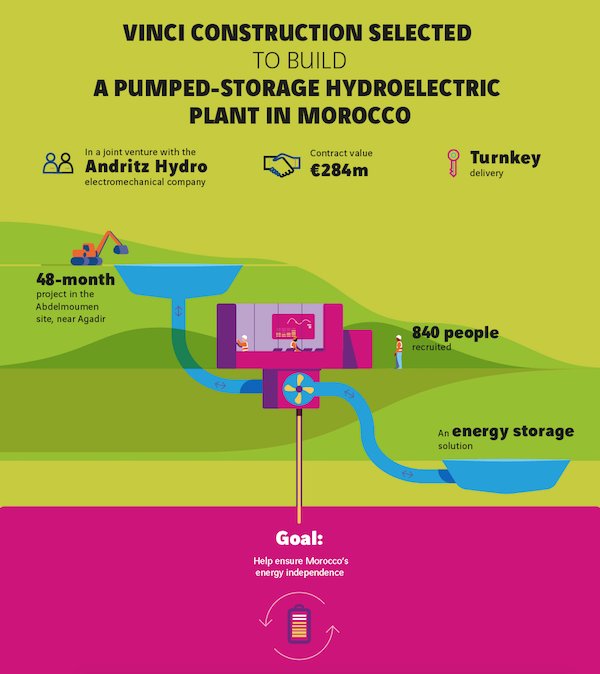
VINCI Construction, as leader of a joint venture with the Andritz Hydro electromechanical company, has won the contract to build the Abdelmoumen pumped storage hydroelectric plant (PSP) located 70 km from Agadir, Morocco.
The €284 million pumped-storage scheme is part of the plan to develop and integrate renewable energies in Morocco. The contract covers construction surveys, civil engineering works, supply of materials and pumping equipment, assembly, testing and commissioning.
The civil engineering works to be carried out by VINCI Construction include earthworks for two reservoirs, excavation for the powerhouse to be embedded in the slope, and installation of the penstock pipe over a distance of 3 km, including 1 km underground. New roads will be built and several others will be refurbished to provide access to the facilities both during construction and during operation of the future site. The electromechanical equipment, for which Andritz Hydro is responsible, includes two 175 MW Francis turbines specially developed in the company’s laboratory and a high voltage substation.
A total of 840 people will be recruited for the 48-month project, including 780 to be hired locally.
A training programme will be set up to ensure worksite safety and quality.
The Abdelmoumen PSP: a pumped-storage energy solution
The water stored in an uphill tank will be released into a 3-kilometre transfer line (penstock and galleries) and travel on a natural slope to a tank about 550 metres downhill. A 350 MW hydroelectric plant will be built along the penstock between the two reservoirs. The reversible plant will generate electricity when operating in turbine mode and pump water from the lower to the upper reservoir in pumping mode. The system will thus generate renewable energy on demand. The system can be switched between pumping and turbine mode up to 20 times a day, depending on the amount of surplus electricity available or the needs of the Moroccan electricity grid.
VINCI, a long-term benchmark provider in Morocco
In Morocco, VINCI operates primarily via its subsidiaries Sogea-Satom and VINCI Energies. Sogea-Satom subsidiaries Sogea Maroc and Dumez Maroc have been operating in the country for 90 years. Sogea Maroc delivers solutions and services in four business areas (building, engineering structures, industrial civil engineering and hydraulic engineering). Its notable past projects include civil engineering works for the Jorf Lafsar chemical plant and the Renault plant in Tangier and the company is currently building the high-speed railway line stations in Tangier and Kenitra. Dumez Maroc for its part specialises in marine works and recently built the new fishing port in Casablanca. VINCI Energies Maroc began operating in Morocco 70 years ago and is a major provider in the country’s electrification programme initiated in 1996. It is also the leading developer of high voltage and extra high voltage electricity generation, transmission, transformation and distribution infrastructure.

“The project included high-risks tunnelling works in a 4km tunnel (part of a 17km strategic railway line), underneath Hong Kong’s highly built-up urban areas, in close proximity to residents. In a complex geological situation, different tunnelling methods had to be used such as cut- and-cover and drill-and-blast at only 6m above a live water supply tunnel; TBM crossing twice at 6m below an operating railway line… A particularity to be mentioned is the alternative design which was used for a large-span mined soft ground tunnel to reduce construction and safety risks as well as the redesigning of the ventilation shaft to improve safety”, the ITA jury stated as it awarded the prize.
In September 2016, the Hin Keng to Diamond Hill tunnels were delivered to the client, MTR. Currently, project teams are completing exterior works and interior technical and architectural works in the shafts for final project delivery, which is set for the first part of 2018. MTR plans to launch the initial phase of the Shatin to Central Link in 2019.
At the awards ceremony, our client on the Doha metro project, Qatar Railways, received the “Major Project of the Year” award (for projects valued at more than €500 million) for its work as a whole in that country. Since June 2013, we have been taking part in this vast infrastructure project with operations on the Red Line South: a 13.8-km dual-tunnel link running from the historic district of Msheireb in central Doha to Doha Airport.
In addition, for its “Young Tunneller of the Year” award, ITA selected Tobias Andersson, a TBM manager who started his career as part of our Skanska-VINCI consortium on the Hallandsås Tunnel project in Sweden.
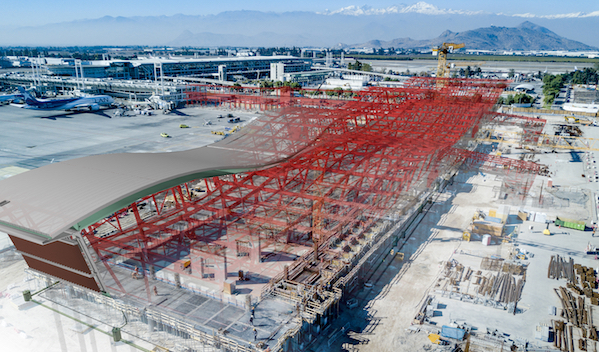
The project to renovate the Mandarin Oriental Hotel in London was awarded a 2016 BIM d’Or (see news); the judges’ panel for the 2017 edition has again rewarded us in the “International category.” Consequently, the project to expand Santiago Airport in Chile has been recognised as an initiative that fosters the active deployment of BIM. In fact, the use of BIM as early as the project study phase allowed VINCI Construction Grands Projets to validate design decisions with the client quickly and efficiently in the lead-up to the construction phase.
The use of this modelling resource enabled us to take multiple factors into account and find solutions for challenges, including managing the flow of passengers between the domestic and international zones, optimising the placement of shops, and streamlining airport safety requirements. Yet another issue was to ensure full interoperability between the building information models that were part of project delivery and the operational solution selected by the concession-holder.
Implementation of BIM at the start of the project study phase enabled us to deploy innovative collaborative processes for design development and consolidation, work planning and scheduling (with 3D phasing), and quantified budget-monitoring. Currently, new functionalities, such as the application of on-site controls with data capture and the monitoring of corrective action are being deployed for the construction phase. You can view the complete of 2017 winners (in French) here.
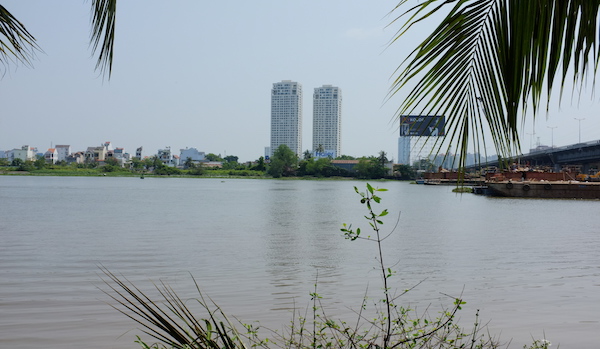
VINCI Construction subsidiaries, VINCI Construction Grands Projets and Bessac (Soletanche Bachy) have won the contract to design and build a 10 km treated water transmission pipeline to supply the centre of Ho Chi Minh City, the economic capital of Vietnam. The project is funded by the Asian Development Bank and Sawaco (Saigon Water Corporation) as programme manager.
The contract, signed on 24 August in Ho Chi Minh City, covers detailed project design; production of prefabricated reinforced concrete pipe sections with an outside diameter of 3 metres; pipe installation by means of pipe jacking; drilling of 16 shafts; and construction of 11 connections and five stubs for future connections to the network. The pipeline route runs along metro Line 1, currently under construction, and under the Saigon River.
The combined experience of VINCI Construction Grands Projets in water project management and Bessac in microtunnelling has made it possible to optimise the project and offer the client an economic solution delivered on time following 3.5 years of works.
VINCI Construction Grands Projets has supported Vietnam by carrying out a large number of sewer projects for such cities as Thai Nguyen and Hoi An (a UNESCO World Heritage site) in 2016, Vung Tau in 2013, and Ha Dong in 2008.











